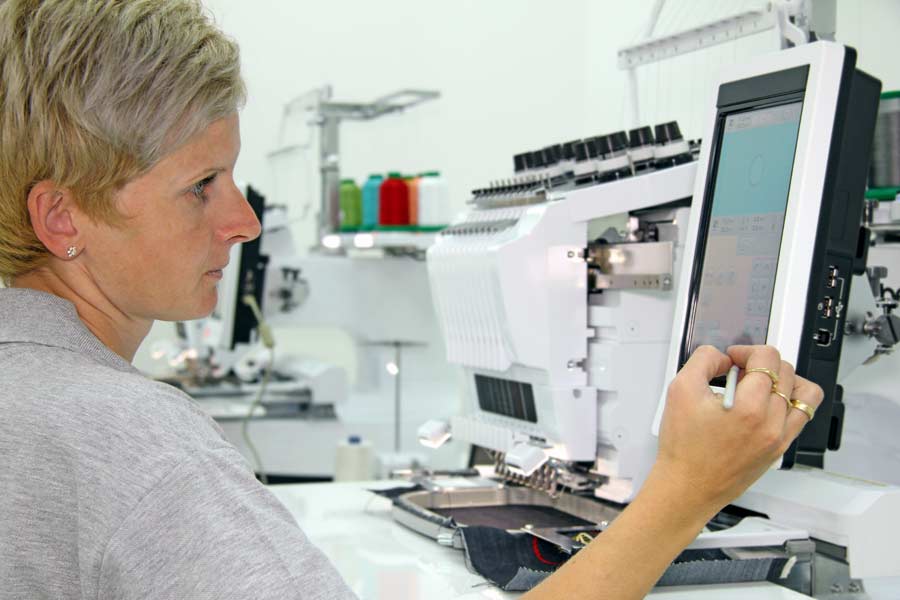Logo Digitizing 101: Transform Your Brand with Professional Embroidery

Introduction
Branding is one of the most powerful tools for business success, and a logo is at the heart of that branding. While printed logos are common, embroidered logos offer a premium, durable, and professional look. However, to embroider a logo, it must first be digitized—a process that converts standard images into machine-readable embroidery files. In this guide, we’ll explore Logo Digitizing 101, covering everything from how digitizing works to its benefits, the best practices, and tips for achieving flawless embroidered branding.
What is Logo Digitizing?
Logo digitizing is the process of converting a regular digital image (such as a JPEG, PNG, or SVG) into an embroidery file that an embroidery machine can read and stitch onto fabric. Unlike graphic design, embroidery digitizing requires careful planning, as each stitch must be mapped out to ensure precision, clarity, and durability.
Why is Logo Digitizing Important?
Embroidery machines cannot interpret standard image files. Without digitization, a machine won’t know where to place stitches, what stitch type to use, or how to ensure proper thread tension. A poorly digitized logo can lead to misaligned stitches, uneven designs, and a lack of detail. High-quality digitization ensures:
- Precision and clarity – Every detail is accurately translated into thread.
- Consistency – Logos appear uniform across all embroidered items.
- Durability – Embroidered designs last longer than printed logos.
The Step-by-Step Process of Logo Digitizing
1. Choosing the Right Software
Professional embroidery digitizers use specialized software to create high-quality designs. Some of the best software options include:
- Wilcom Embroidery Studio – Industry-leading software with powerful tools for complex designs.
- Hatch Embroidery – User-friendly software ideal for beginners and professionals.
- Pulse DGML – High-end software with advanced features for commercial embroidery.
2. Preparing the Logo
Not all logos are suitable for embroidery. Before digitizing, the image must be:
- High resolution to maintain detail.
- Simplified if it has intricate elements or shading.
- Optimized for fabric type and size constraints.
3. Assigning Stitch Types
Different parts of a logo require different stitch techniques to achieve the best results. The main stitch types used in embroidery digitizing include:
- Satin Stitch – Ideal for text and borders, providing a smooth and shiny finish.
- Fill Stitch – Used for larger areas that need full coverage.
- Running Stitch – Suitable for fine details and outlines.
4. Adjusting Stitch Density and Direction
The number of stitches per area affects the logo’s appearance and durability. A well-digitized logo will have balanced stitch density to avoid puckering or stiffness. Stitch direction also plays a role in creating texture and ensuring smooth embroidery.
5. Adding Underlay Stitches
Underlay stitches provide a strong foundation for embroidery, preventing fabric distortion and ensuring clean, even stitching. Common underlay types include:
- Edge Walk – Prevents fabric from shifting.
- Zigzag – Adds support to satin stitches.
- Tatami – Used under fill stitches for stability.
6. Testing and Adjusting the Design
Once the digitized file is created, a test run is done on fabric to check for errors such as:
- Uneven stitching
- Thread breaks
- Poor alignment
Adjustments are made to fine-tune the design before full production.
Benefits of Logo Digitizing for Businesses
1. Professional and High-Quality Branding
A well-digitized logo ensures a polished and professional look, reinforcing brand identity on uniforms, corporate wear, and promotional items.
2. Increased Durability and Longevity
Unlike printed designs that fade or peel, embroidered logos are resistant to wear and washing, making them ideal for long-term branding.
3. Versatility Across Different Materials
A digitized logo can be embroidered on various materials, including:
- Cotton and polyester fabrics
- Caps and hats
- Towels and aprons
- Jackets and hoodies
4. Cost-Effective for Bulk Production
Once a logo is digitized, it can be used repeatedly without extra costs, making it a cost-effective solution for businesses ordering large quantities of embroidered apparel.
Common Mistakes in Logo Digitizing (and How to Avoid Them)
1. Using an Overly Complex Design
Fine details, gradients, and tiny text may not translate well into embroidery. Solution: Simplify the design while maintaining brand identity.
2. Ignoring Fabric Type
Different fabrics react differently to embroidery. Solution: Adjust stitch settings based on fabric type to prevent puckering or distortion.
3. Incorrect Stitch Density
Too many stitches make the design stiff, while too few result in gaps. Solution: Use the right density settings for a balanced look.
4. Skipping a Test Run
Skipping a test can lead to production errors. Solution: Always stitch a sample before full-scale embroidery.
How to Choose a Professional Logo Digitizing Service
If you’re new to embroidery digitizing, hiring a professional service ensures high-quality results. Look for:
- Experience in embroidery digitizing
- Fast turnaround times
- Support for multiple file formats (DST, PES, EXP, etc.)
- Positive customer reviews
Conclusion
Logo digitizing is a crucial step in embroidery that transforms a digital design into a stitchable format, ensuring accuracy, consistency, and durability. Whether you need embroidered uniforms, promotional merchandise, or branded apparel, professional digitization guarantees flawless results when you digitize logo for embroidery.
By understanding the digitizing process, avoiding common mistakes, and choosing the right software or service, businesses can create high-quality embroidered logos that enhance their brand’s visibility and professionalism through digitize logo for embroidery.





